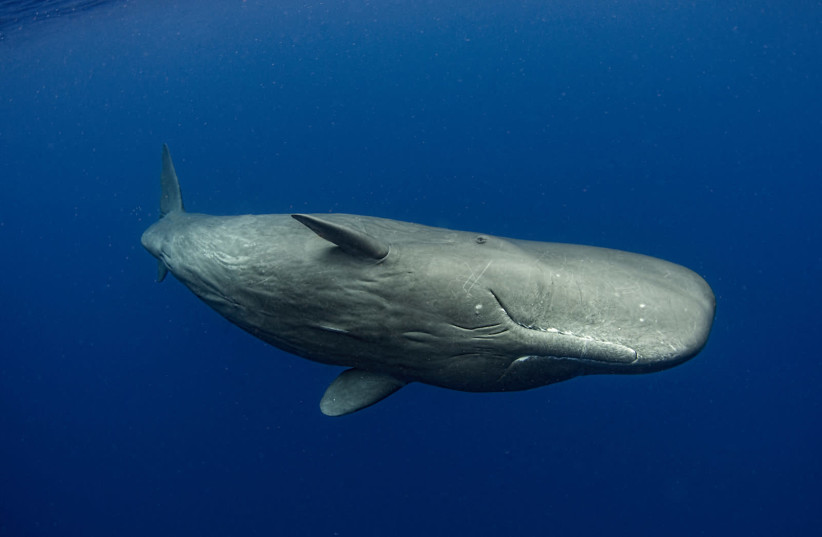
A massive global scientific collaboration has been launched to help crack the secrets of how whales communicate with one another, and maybe see if humans can understand it.
Known as the Cetacean Translation Initiative (CETI), the program is a massive collaborative effort between research institutions all over the world, including Harvard, Massachusetts Institute of Technology (MIT), U.C. Berkley, City University of New York (CUNY) and Israel’s own University of Haifa.
The specific focus of the study is sperm whales, and has been over a decade in the making. National Geographic explorer Shane Gero had spent over 13 years carefully recording the cetacean communication, which in sperm whales takes the form of “clicks” that can be classified as “codas.”
A number of disciplines are being used to determine if sperm whales do, in fact, utilize something humans can classify as “language.” If this is indeed a language, then it will also be possible to understand it.
And while it may seem far-fetched, the idea of sperm whales having a language isn’t impossible.
Many cetaceans possess some form of vocal ability. This is most famously seen in the “whale songs,” such as those used by humpback whales. However, the vocal capabilities can go far beyond that, and some have been known to have the ability to seemingly mimic human language.
Arguably the most famous example of this was Noc (pronounced no-see), a beluga whale captured by the US Navy in the late 1970s that was recorded to have made sounds mimicking human speech. These findings were recorded and have been analyzed by scientific studies.
if(window.location.pathname.indexOf(“656089”) != -1){console.log(“hedva connatix”);document.getElementsByClassName(“divConnatix”)[0].style.display =”none”;}
And as they possess the physical capabilities of using a language, it is also possible whales created one in order to fulfill social needs.
As noted by National Geographic, human language was at least partially created and evolved over time to help mediate social relationships in complex societal structures. And as shown by researchers, many whales – including sperm whales – do indeed have complex social relations and structures, and language could serve a purpose.
Whales have been shown to have echolocation capabilities that travel miles underwater. Through these clicks and vibrations, whales under attack can potentially communicate with further pods and warn them of the danger that awaits with whaler ships.
Additionally, whales that survived attacks could teach the more innocent of the pod how to avoid whalers should the group encounter another ship.Whether whales have evolved this form of communication into a proper language remains to be seen, but it isn’t impossible.
Whales aren’t even the only animals theorized to have a language. Elephants, for instance, also may have the vocal capabilities to mimic some aspects of human language – indeed, one elephant has been proven to speak some words in Korean. And the complex communication methods used by elephants may in fact be signs of a language, though not enough information exists to prove that just yet, according to elephant researcher and conservationist Joyce Poole.
Regardless, the CETI is perhaps the largest ever attempt at inter-species communication.
Set to take place over the course of around five years, the study will use everything from linguistics, marine biology and artificial intelligence.
“With the advancement of machine learning, and advanced linguistics, we realized that if we gathered enough data about their voices, the context in which these sounds are employed and understood and their behavior and motivation behind these sounds, we can then develop an algorithm which will determine whether they have an authentic language,” one of the leaders of the project, Prof. Dan Tchernov of University of Haifa’s Leon H. Charney School of Marine Sciences and Scientific Director of The Morris Kahn Marine Research Station, said in a statement.
While the goal is to understand how the whales communicate with one another rather than talk to them directly, Tchernov noted that “Of course, the dream would be if we are able to communicate with them, on their terms.”
And if this is successful, it would revolutionize wildlife research, and pave the way for further groundbreaking discoveries in zoology and linguistics alike. To learn more about CETI, visit their website at https://www.projectceti.org/.
Tobias Siegal and Hadassah Brenner contributed to this report.




